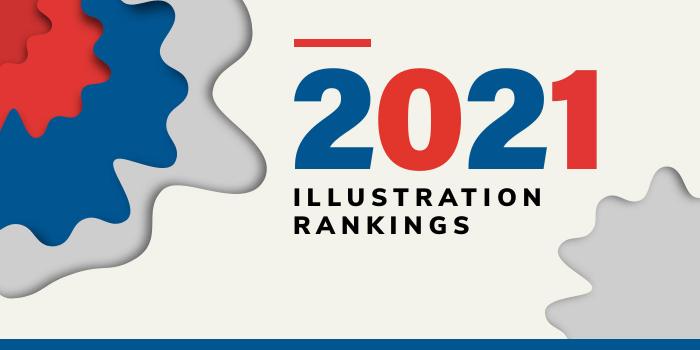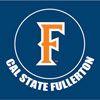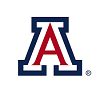
What are the top public illustration schools in the U.S. for 2021?
| Ranking | School | State |
|---|---|---|
| 1 | Fashion Institute of Technology | New York |
| 2 | Massachusetts College of Art and Design | Massachusetts |
| 3 | Virginia Commonwealth University | Virginia |
| 4 | San Jose State University | California |
| 5 | California State University, Fullerton | California |
| 6 | California State University, Long Beach | California |
| 7 | University of Central Florida | Florida |
| 8 | California State University, Northridge | California |
| 9 | Ferris State University | Michigan |
| 10 | Indiana University-Purdue University, Indianapolis | Indiana |
| 11 | University of Georgia | Georgia |
| 12 | Texas State University, San Marcos | Texas |
| 13 | University of Colorado, Denver | Colorado |
| 14 | University of North Carolina, Charlotte | North Carolina |
| 15 | University of Connecticut | Connecticut |
| 16 | University of Arizona | Arizona |
| 17 | East Carolina University | North Carolina |
| 18 | University of Illinois at Chicago | Illinois |
| 19 | University of Massachusetts, Dartmouth | Massachusetts |
| 20 | California State University, East Bay | California |
Our 2021 list of the Top 20 public college illustration programs in the U.S. For an explanation of ranking criteria, click here.

Fashion Institute of Technology (FIT) opened in 1944 with just 100 students on the top two floors of the High School of Needles Trades. Today, as part of the State University of New York (SUNY) System, FIT spans an entire city block and serves more than 10,000 students enrolled in a variety of programs. Just a few include Cosmetics and Fragrance Marketing, and Menswear, which are unique to the college, and Fashion Business Management, Visual Presentation and Exhibition Design, and Toy Design, the first of their kind in the country.
Programs are offered in five academic divisions including the Schools of Art and Design, Liberal Arts, and Graduate Studies, Jay and Patty Baker School of Business and Technology, and the Center for Continuing and Professional Studies.
The School of Art and Design offers 17 programs that provide “a practical, hands-on, real world based education,” says the school. Serving approximately 3,322 students, the School of Art and Design houses the Illustration Department, which offers AAS, BFA, and MFA Illustration programs.
Department highlights include a close affiliation with the Society of Illustrators—the industry's top professional organization, 50 award wins by students in highly competitive student art exhibitions, including the prestigious Society of Illustrators Annual Scholarship Competition, and the mentoring by art directors or illustrators who analyze students’ work and offer professional advice and support.
Students will learn the business of illustration and they are required to take a nine-course selection of computer classes (unique to FIT) that will keep them up-to-date in the skills many employers require. Students will also have the option to specialize in either Fashion or General Illustration. An optional Study Abroad course in Italy is also available.
Other course highlights include 2D Computer Animation, Advanced Visual Story Studio, Applying Color to Illustrate the Written Word, Book Illustration, Comic Book Illustration, Digital Illustration Techniques, Illustration Rendering Techniques, Illustrating the Written Word, Mentor/Specialization Projects, Stylistic Illustration, The Business of Illustration, The Illustrator’s Heritage, and Visual Storytelling for Evolving Media I-II.
The Illustration Portfolio Thesis is a final preparation for students entering the illustration business. This three-credit, six lab hours course highlights guest speakers from industry that provide students with insight into business practices, entrepreneurial strategies, and freelance and staff employment. Students present and defend their visual thesis before faculty and peers.
FIT Illustration graduates have gone on to build successful careers at Advertising Agencies such as BBDO, DDB, J. Walter Thompson, Ogilvy & Mather, and Young & Rubicam, and at corporations such as American Greetings and Hallmark, Magazines such as Harper’s Bazaar and Vogue, and entertainment companies such as DreamWorks SKG, LucasArts Entertainment, Walt Disney, and Warner Brothers.

Massachusetts College of Art and Design (MassArt) began as Massachusetts Normal School in 1873. Today, the college is known as “the Commonwealth’s Art and Design School.”
MassArt serves 2,000 undergraduate, graduate, and continuing education students enrolled in dozens of programs in areas such as Animation, Film and Video, Glass, Illustration, Industrial Design, Painting, Printmaking, and Sculpture. Programs lead to the BFA, MFA, MDES, MAT, or MArch.
The Illustration Department at MassArt offers a BFA in Illustration that “emphasizes the understanding of character development and narrative techniques,” says the school. Students in the program take a variety of Illustration and Liberal Arts courses taught by instructors who are freelance illustrators or illustrators who have their own businesses.
Liberal Arts course highlights include Introduction to Western Art, Literature/Writing/Film, and Thinking, Making, Writing: Using Words with Clarity and Flair. Major course highlights include Advanced Drawing Projects for Illustrators, Black and White Illustration, Book Arts, Color for Illustrators, Digital Illustration, Digital Painting and Techniques, Experimental Illustration Techniques, Human Figure Illustration, Media Techniques, Narrative Illustration, Painting for Illustrators, Professional Illustration, Studio for Drawing, Technical Illustration, Virtual 3D Illustration, and Word and Image.
A Course Assistantship, Independent Study, Professional Freelance Studio, and an Internship are also part of the program.
During the final year of the program, students will complete Illustration Portfolio, Senior Illustration, Studio Electives, and the Thesis Project. Students will present their Portfolio to invited professionals from advertising, corporate, editorial, institutional, and publishing markets.

Virginia Commonwealth University (VCU) was established in 1838 as the medical department of Hampden-Sydney College. This public research university serves around 31,100 students enrolled in more than 200 programs in 13 schools and one college.
The School of Arts (VCUarts) serves more than 3,000 students and it houses 16 departments and programs offering 18 bachelor’s and five master’s degrees. The VCUarts Department of Communication Arts houses the VCUarts Illustration Program. Several options are available: a BFA in Communication Arts OR Communication Arts with a Concentration in Scientific Illustration, and a Minor in Scientific Illustration.
The Minor is 21 credit hours and acceptance to this unique program is based on a portfolio and application review. The BFA in Communication Arts prepares students for careers in illustration for print or digital publishing, comic book art, or a scientific illustration. The program consists of many new and elective courses “designed to reinforce and expand the drawing, design, and illustration components of the curriculum,” says the school. Students will have the opportunity to develop a variety of projects in illustration and complete an internship and/or study abroad experience.
Course highlights for the program include 3D Modeling for Concept Design, Color Theory, Game Design, Theory and Practice, Imagery for Children, Imagery for Science Fiction and Fantasy, and The Figure in Illustration. Program alumni are 3D Modelers and Animators, Editorial Illustrators, Fine Artists, Game Designers, and Interactive Media Designers.
The BFA in Communication Arts with a Concentration in Scientific Illustration requires 32 credits in the biological sciences and chemistry, in addition to communication major and illustration courses. Students in the program will also have the opportunity to complete an internship and/or study abroad experience. Course highlights include 3D Modeling, Basic Human Anatomy, Digital Drawing, Drawing Studies: The Figure Observed, Environmental Science, General Chemistry, Mixed-Media Illustration, and Scientific Illustration. Program alumni are 3D Modelers and Animators, Concept Artists, Scientific Illustrators, and more.

Established in 1857, San Jose State University (SJSU) is known as “Silicon Valley’s Public University.” The school employs nearly 3,600 employees, making it “an essential partner in the economic, cultural and social development of Silicon Valley and California,” says the school.
More than 250 areas of study at the bachelor’s, master’s, and doctoral levels are offered in eight colleges. Programs for aspiring illustrators are offered in the College of Humanities and the Arts, Department of Design. Options include a BA in Design Studies Specializing in Animation/Illustration, a BFA in Animation/Illustration (Professional Degree), and an MFA in Digital Media Art.
The BA in Design is a Liberal Arts degree that provides “basic preparation for entry-level jobs in the entertainment industry.” Optionally, students “can later apply to a graduate program in Animation/Illustration or similar fields of study.”
The curriculum for the BFA in Animation/Illustration combines traditional and innovative educational strategies, including color design, conventional and digital painting, theory, and perspective. Students will also study the principles of traditional and 3D animation, character design, modeling, physics of motion, storyboarding, and visual development. Upper-division classes offer the opportunity for students to specialize in an area of their choice. Students also have additional learning and networking opportunities through the Department’s speaker engagements.
The BFA program has developed tight bonds with industry partners over the last 25 years, giving students the chance to hear from speakers from big name corporations like Bento Box, Blizzard, Blue Sky Studios, Cartoon Network, Disney, DreamWorks, Hallmark, Industrial Light & Magic, Nickelodeon, Pixar, SONY Pictures Animation, Warner Bros., and many others.
The MFA in Digital Media Art is offered in collaboration with the CADRE Institute which “reflects the innovative atmosphere in Silicon Valley,” says the school. Academic programs here emphasize artistic experimentation within a context of historical, cultural, and theoretical study. The program is intended for students with interest in contemporary research. CADRE's diverse community of faculty and graduate students produce artworks involving visualization, simulation, hypertextuality, information, mapping, telepresence, networks, and interactive systems.
Technical facilities include a wide range of computing resources. Students work across the boundaries of computer visualization, animation, digital video, multimedia, electronic sculpture, sound and virtual reality. CADRE supports its own networking environment and offers excellent opportunities to produce internet-based artworks.
Graduates of the Illustration Programs at SJSU have worked on films such as A Bug’s Life, Finding Nemo Monsters, Inc. and Shrek. Graduates have also been hired at more than 135 animation studios, game design companies, film studios, and academic institutions. Just a few include 20th Century Fox, Animation Mentor, Blue Sky Studios, Blizzard Entertainment, Cartoon Network, Cogswell Institute, Disney Interactive, Electronic Arts, Lucasfilm Animation, NBCUniversal Studios, Nickelodeon, Pixar, Sony/Columbia, The Art Institute of Las Vegas, Disney Animation, and Zynga.

In 1957, California State University Fullerton (Cal State Fullerton or CSU Fullerton) became the 12th state college in California to be authorized by the Legislature. The school serves nearly 41,500 students enrolled in 110 undergraduate, graduate, and doctorate programs. Programs are offered in eight colleges, including the College of the Arts, which houses the Visual Arts Department—home of the Illustration Program. Program options include BFA, MA, and MFA Degrees in Art with a Concentration in Illustration.
The BFA program is designed for students interested in developing skills in a focused area or to prepare them for graduate study. Course highlights for the Illustration Concentration include 3D Computer Animation, Cartooning and Caricature, Digital Narrative Illustration, Elements of Sequential Art, Lettering and Typography, Life Drawing, Special Studies in Illustration, and Visual Development and Background Painting. All students will have the opportunity to complete an internship.
The focus of the MA program “is to deepen the students understanding of craft and visual problem solving skills demonstrated in a portfolio that prepares graduate students to reenter the workforce,” says the school. Students will study “contemporary and historic issues in illustration with an emphasis on story concepts, design, color theory, perspective, theatrical composition and lighting, stylization, further development of the drawing and painting process, visual problem solving, and portfolio presentation.”
The program consists of nine units of required studio courses and at least 12 units in Illustration. Students may also take an additional three to six units in Illustration or other electives. All students will complete a project to exhibit in one of the Department of Arts graduate galleries. Graduates will have the skills needed to reenter the workforce, or enter a program leading to the terminal degree.
The MFA is a “rigorous” studio program that requires 60 units to graduate. Students in the program must take 24 units in the Studio Area of the Illustration Concentration, at least 12 units of electives, and independent study. Students must pass the semiannual comprehensive portfolio review and a studio project is part of the program. The project “constitutes a professional one-person art exhibit. It is installed in one of the department’s graduate galleries and announced for public view by the student as the final phase of the MFA program requirements.”
Graduates of the Illustration programs at CSUF have found employment at major entertainment and publishing companies, such as the Cartoon Network, DreamWorks SKG, Lucas Films Ltd. and Walt Disney Company.

California State University-Long Beach (CSULB) opened on September 28, 1949 in a small converted apartment building under the name Los Angeles-Orange Country State College. The school had 160 students and 13 full-time faculty. Today CSULB employs more than 4,000 professionals serving over 38,000 students.
One of the 23 campuses of the California State University System, CSULB offers more than 300 programs in eight colleges. One of the school’s most popular colleges is the College of the Arts. Made up of six separate academic units, the College houses the School of Art (SoA), which offers a BFA in Art with an Illustration/Animation Option and an MFA in Studio with an Animation/Illustration Track. Certificate in Biomedical Illustration is also available.
Students in the BFA program may choose the Animation or Illustration Track, but they may take courses in both tracks and work with students in both tracks in the digital lab. Course highlights for the program include Advanced Illustration, Advanced Life Painting, Costumed Figure Drawing, Experimental Animation, Special Studies in Illustration, Storyboarding for Film and Television, and Visual Development.
Workshops presented by faculty and visiting artists are part of the program as well as courses taught by resident illustration faculty comprised of experienced professional artists currently working in the fields of illustration and animation. Internship and study abroad opportunities are also highlighted.
MFA Program “is designed to foster both interdisciplinary and discipline-specific dialogue by engaging students in a set of core department-wide requirements, interdisciplinary opportunities, and discipline- specific courses and curricular “tracks,”” says the school. “Within the MFA degree in Studio Art students develop a personalized program of study within established curricular parameters, and with the consultation and approval of the student’s faculty committee.”
“Students develop a more personalized program of study within curricular tracks reflecting the School of Art’s varied programs in Ceramics, Drawing and Painting, Fiber, Illustration/Animation, Metal, Photography, Printmaking, Sculpture/4D, Graphic Design, and Wood.” All students will participate in the final MFA Exhibition.
The Certificate in Biomedical Illustration is sponsored by the Art and Biological Sciences Departments. The program is available to students who are presently enrolled in a degree program in the Biological Sciences or in Art at CSULB. Students in the program will take courses such as Anatomy for Artists, Biomedical Illustration, Biomedical Rendering, Computer Animation, Foundation Computer Art, Illustration 2, and Special Studies Illustration. The Certificate Program requires 30 units of study.
Graduates of the Illustration Programs at CSULB are prepared for professional positions as an artist or designer, and for teaching studio art within a selected specialization. Alumni “work in a variety of fields such as film and entertainment (gaming, animation and live action film), advertising, textiles, biomedical illustration, the gift market, educational illustration, architectural illustration, print publications (newspapers, magazines, graphic novels and books) and more.”
Many alumni have also “distinguished themselves in visual journalism, in storyboarding for film and television, and in all aspects of editorial art as well as gallery exhibition.”

In 1968, University of Central Florida (UCF) opened in as Florida Technological University with less than 2,000 students. The first graduating class consisted of 423 students, and the school granted its first doctoral degree in 1977. Today, UCF leads all universities in Florida in conferring more than 17,000 degrees a year. Serving nearly 72,000 students, the school is also the largest university by enrollment in Florida and one of the largest universities in the nation.
UCF offers 103 bachelors and 91 master’s degrees, 31 research doctorates, three professional doctorates, and three specialist degree programs in 13 colleges. The College of Arts and Humanities at UCF houses the School of Visual Arts & Design (SVAD), which offers a BA with a Studio Track, a Studio Art BFA, and an MFA Program in Studio Art. UCF also offers a 24 credit hour Minor in Studio Art.
Specializations for the BA and BFA degree programs include Book Arts, Ceramics, Drawing and Illustration, Drawing and Printmaking, Painting, Photography, Sculpture, and Type and Design. The Studio Art BFA with a Specialization in Drawing and Illustration requires more credit hours than the BA with a Studio Track. The BFA is recommended for aspiring illustrators seeking immediate employment in the field or for students who plan to attend graduate school.
“The degree provides a solid foundation in techniques and theory in focused areas of competence,” says the school. BFA students must complete the Portfolio and Exhibit/Seminar courses and BA students must pass the Studio Art Portfolio Review.
Course highlights for the Illustration Programs include Advanced Drawing, Advanced Illustration, Art as Interface, Design Fundamentals-Three Dimensional, Intermediate Illustration, and Screenprinting. Students in all programs have the opportunity to complete an internship and participate in both local and international study experiences.
The MFA program requires 60 credit hours and students will have the opportunity to experiment with Traditional and New Media. Graduates are prepared for leadership positions in Art and Design, Education, Media, Publishing, and more.

Founded in 1958, California State University-Northridge (CSUN) is one of the 23 campuses of the California State University System. Situated on a 356-acre campus in the heart of Los Angeles’ San Fernando Valley, CSUN is a community of 38,310 students and more than 4,000 faculty and staff. Nine colleges provide bachelor's degree programs in 133 disciplines, 84 master's degree options, and doctorates in educational leadership and physical therapy.
The Mike Curb College of Arts, Media, and Communication houses the Department of Art, which offers BA, MA, and MFA degrees in Visual Arts with a Concentration Illustration.
Illustration students will “study illustration as both an art form and as a profession,” says the school. “Topics cover historical and contemporary illustration and its evolving styles and technologies.” Professional preparation topics include business and trade practices, goal setting, portfolio and website development, researching employment opportunities, and self-promotion. Students “learn methods for creating new ideas and for the effective visual communication of those ideas. Projects emphasize a wide range of technical skills in fine art and digital media, conceptual problem-solving abilities, composition and design, self-expression and the development of a personal artistic vision.”
Other program highlights include interaction with visiting artists, study abroad experiences, and the opportunity to exhibit illustrations at various showcases. In addition, all Curb College Department of Art students have the opportunity to participate in industry and studio events, organized studio tours, and ongoing collaborative educational partnering with DreamWorks studios and Seoul Institute of the Arts.
Students also participate in industry events and internships with Disney, Film Roman, Nickelodeon, Warner Bros., and many other studios.

Founded in 1928, Kendall College of Art and Design (KCAD) is a college within Ferris State University. The school serves more than 1,000 students enrolled in around 24 BFA, BS, MA, MFA, and Certificate programs. KCAD offers BFAs in Illustration and Medical Illustration and a 15 credit hour Minor in Illustration.
Launched in the 1960s, the BFA in Illustration focuses on the traditions of illustration, while incorporating a wide variety of media, techniques, and processes—traditional and digital. The “focused study of illustration will be complimented by courses in drawing, digital imagery, art history, and studio electives,” says the school, helping them broaden both their “perspective” and “notions of creative possibility.”
Course highlights for the program include Advanced Inking, Digital Illustration Painting, Graphic Design for the Illustrator, Illustration Life Drawing, Illustration Professional Practices, Illustration Techniques, Narrative Perspective, Natural Science Illustration, Rendering, and Watercolor Techniques for the Illustrator. Students will also have the opportunity to build a Professional Portfolio of their best work.
Program highlights for the BFA in Illustration Program include access to KCAD galleries, labs, and the Urban Institute for Contemporary Arts (UICA), focused study of illustration, and participation in the KCAD Illustration Society. Students also have opportunities to participate in summer travel/study experiences as well as internships during the academic year and summer months.
Graduates of the BFA program are prepared to pursue careers such as Art Director, Cartoonist, Editorial Illustrator, Fashion Illustrator, Freelance Illustrator, Mural Designer, Storyboard Illustrator, and more.
The BFA in Medical Illustration is a three-year program that consists of classes from KCAD, Ferris State University, Grand Rapids Community College, and Michigan State University. “Through a blend of focused artistic instruction and scientific exploration, students learn to transform complex information into compelling visual communication.” Students in the program will take a combination of Art, Communication, and Science courses. Examples include Dialogue and Personality, Digital Illustration Painting, Human Gross Anatomy, Medical Illustration Animation I-II, Medical Illustration Methods I-II, Pathophysiology, Professional Practices for the Medical Illustrator, and Writing.
Medical Illustration students will also complete the Capstone course: Advanced Problems in Biomedical Art. Graduates of the BFA in Medical Illustration Program are prepared to seek intermediate to advanced positions in the field or for further graduate or professional level study.

Established in 1969, Indiana University-Purdue University Indianapolis (IUPUI) serves 29,390 students enrolled in 450 undergraduate, graduate, and professional programs in 19 distinct schools and colleges. The Herron School of Art + Design offers a BFA in Drawing + Illustration. The school also offers an MFA in Visual Arts.
The BFA is a professional degree that includes access to the latest equipment and technology in the student’s choice of studio space, the opportunity to enhance the degree with a Minor in Book Arts or Design Production, and classes taught by faculty who are working professionals in the field. The curriculum “provides broad exposure to both traditional and contemporary techniques in all media including digital technology,” says the school. “Students develop skills from both fine and applied arts perspectives.”
Coursework, which consists of extensive studio experience in both Drawing and Illustration, includes Advanced Drawing & Illustration, Building & Making, Digital Rendering, Image & 4D Studio, Intermediate Illustration, Narrative Drawing, and Studio Art & Technology.
Graduates of the BFA in Drawing + Illustration Program are prepared to pursue positions such as Animator, Children's Book Illustrator, Comic Artist or Graphic Novelist, Editorial Illustrator, Packaging Designer, Scientific or Technical Illustrator, Set or Exhibition Designer, Storyboard or Concept Artist, or Toy or Product Designer. Some graduates go on to work as freelance artists or designers, while others start their own businesses.
The MFA in Visual Arts is a flexible degree that highlights private studio space, exposure to artists, designers, and industry professionals through Herron's endowed lecture series, and cross-campus and city-wide collaborations and commissions with Herron's and Indianapolis' many cultural institutions, social initiatives, and corporate and government partners—all facilitated by Basile Center for Art, Design and Public Life. Study abroad trips are also part of the program.

Established in 1785, University of Georgia (UGA) is the state’s flagship institution. The university’s 17 colleges and schools enroll more than 38,000 students and offer 370 fields and areas leading to the bachelor’s, master’s, specialist education, professional, or PhD degree.
The Franklin College of Arts and Sciences houses the Lamar Dodd School of Art, which offers a BFA in Art with a Concentration in Scientific Illustration. “Students pursuing the BFA degree enter the School of Art as Intended Art majors,” says the school “and will apply to an area of concentration via the School's area portfolio review in the second year of study.”
Course highlights for the program include Advanced Drawing, Advanced Scientific Illustration, Anatomy of the Figure, Digital Narrative Systems, Graphic Systems, Illustration, Intermediate Scientific Illustration, and Special Problems in Graphic Design. The BFA also requires ARGD 3340 Senior Exit, which consists of the Senior Exhibition, Critique, Portfolio, and Evaluation.
Other program highlights include the opportunity to work and learn in dedicated classroom space, facilities and studio and hands-on experience through internships and study abroad experiences. UGA has more than 100 study abroad and exchange programs in 75 countries.
Graduates of the Scientific Illustration Program at UGA work at/for Academic Medical Centers, Advertising Agencies, Associations (trade or society), Federal Government (military), Hospital, Clinics, or Medical Practices, Medical Education Companies, Medical Legal or Law Firm, Pharmaceutical (device or biotech companies), Publishers (books or journals), Research Institutions, Science Communication or Animation Studios, Software/App Companies, Veterinary Schools, and more.

Authorized by the Texas legislature in 1899, Southwest Texas State Normal School opened its doors in 1903. After four name changes, the school became Texas State University-San Marcos, and finally, Texas State University.
Serving nearly 38,000 students, Texas State University offers more than 200 undergraduate and post-graduate degrees in nine academic colleges. The College of Fine Arts & Communication houses the School of Art and Design, which offers a BFA in Studio with a Specialization in Drawing. This 120 credit hour program offers heavy illustration coursework and emphasizes interdisciplinary experimentation and new media integration.
Course highlights include Character Development for Illustration, Color Theory, Digital Illustration, Digitally Handmade for Artists and Designers, Drawing I-II, Editorial Illustration, Expanded Media, Graphic Novels and Zines, Illustration Techniques and Materials, and Studio Art Foundations I-II.
Studio Art students have access to the University Galleries, which are home to yearly program of exhibitions featuring international artists as well as faculty and student work. “Every Summer, two faculty members, one studio and one art history, lead a study-abroad trip to Florence, Italy.”
Every area of specialization culminates in two semesters of Thesis work, a final Thesis Portfolio, and a BFA Thesis Exhibition. The Studio Art Program “serves a wide range of student interests and pursuits, and prepares students for professional careers as artists and arts professionals.”

The University of Colorado Denver (CU Denver) began as an extension of the University of Colorado Boulder in 1912. The school became an independent campus in 1973 and one of the four campuses of the University of Colorado System. What began in one building in downtown Denver has grown to more than 125 acres and more than 15,000 students enrolled each year.
More than 100 degree and 76 certificate programs are offered in 13 colleges and schools. The College of Arts & Media houses the Illustration Program, which consists of a Fine Arts BFA with an Illustration Emphasis and a Minor Illustration.
BFA students “receive instruction in conceptual illustration, digital illustration, rendering, perspective, painting, exhibition preparation, professional practices, and the use of various artistic and illustration techniques,” says the school. Course highlights include Anatomy for the Artist, Digital painting, Graphic Novel Workshop, Painting, Drawing & the Printed Image, The Business of Art, and Typography Studio.
Students will also take Illustration I: Image Making, Illustration II: Digital Media, Illustration III: Investigative Methods, Illustration IV: Thesis Development, and Illustration BFA Thesis. An internship is also part of the program.
Other program highlights include access to state-of-the art digital labs, sculpture studios, industrial equipment and darkrooms and opportunities at the Denver Art Museum, in galleries across the Front Range, and at digital studios like Pixar.
Graduates of the program are prepared to pursue positions in a “multitude” of fields including Advertising, Animation and Games, Graphic Design, Engineering, Entertainment/Film/Television, Healthcare, Illustration/Medical/Scientific, Marketing, Publishing, and more.

Founded in 1946, University of North Carolina Charlotte (UNC Charlotte) serves more than 30,000 students enrolled in over 200 undergraduate, graduate, and doctoral programs in nine colleges. The College of Arts + Architecture (COA+A) serves 1,000 student enrolled in 33 degrees and concentrations. The Department of Art and Art History here offers Art Education, Art History, Design and Studio Art programs.
The Department also offers a BFA in Art, Studio Art, with a Concentration in Illustration. Course highlights for the program include Children's Book Illustration, Illustration: Media/Method, Illustration Projects, Illustration Sequence/Story, Interactive Art and Design, Mixed Media Painting, The Figure in Illustration, Topics in Illustration, and Video Art. Students will also have the opportunity to participate in the BFA Illustration Exhibition, and complete a paid internship.
The COA+A has relationships with institutions such as the Bechtler Museum of Modern Art, Charlotte Ballet, Charlotte Symphony, Theatre Charlotte, the Blumenthal Performing Arts Center, and The Mint Museum. Students may also participate in the UNC Charlotte Study Abroad Program, which houses the recurring Summer Program in Rome, Italy.

The University of Connecticut (UConn) was established in 1881 as Storrs Agricultural School, opening with just three faculty members and 13 male students. Today, the school employs more than 18,000 faculty and staff members serving a coed population of more than 33,600 students (Fall 2020).
Consisting of one main and four regional campuses, UConn offers eight undergraduate degrees in 119 majors, 17 graduate degrees in 88 research and professional practice fields of study, and six professional degree programs (JD, LLM, MD, DMD, PharmD, SJD) in 14 schools and colleges. The School of Fine Arts houses the Department of Art and Art History, which offers a BFA in Art with an Illustration/Animation Concentration.
Students in the program will gain working knowledge of both traditional approaches and new technologies. Illustration courses “stress the creation of images that expand a text,” says the school. “Text is broadly defined and may include manuscripts, posters, websites, or self-authored works by the illustrator.” Course highlights include Going Pro, Illustration, and Topics in Illustration.
Students will have the opportunity to pursue a wide variety of projects “in both analog and digital environments,” including 2D and Stop Motion Animation, Book, Cartoons, Character and Environment Design, Children’s Illustration, Comics, Design for Products, Editorial, Graphic Novels, Institutional, Self-Promotion, and more. Other program highlights include visiting artists, internship opportunities, and study abroad experiences.

Established in 1885, University of Arizona was the state’s first university. The school serves nearly 47,000 students enrolled in hundreds of bachelors, masters, and doctoral degree, first professional and specialist programs in dozens of colleges and schools. The College of Fine Arts houses the School of Art, which offers BFA and MFA degrees in Studio Art with an Illustration and Design (I+D) Emphasis. Separate Tracks in Illustration and Design are offered to undergraduates.
The I+D program “encompasses a diverse faculty with expertise in graphic design, illustration, letterpress, book arts, visual narratives, animation, motion graphics, information design, and interdisciplinary collaborations with the environmental sciences,” says the school. “These specializations are reflected in a broad array of curricular offerings including: field trips, team projects with community clients, internships, and study abroad programs.”
The Illustration Track provides “rigorous education in constructive anatomy,” says the school. Students will “learn to describe the human form realistically and expressively and find personal methodologies in traditional and digital media.” Graduates will leave the program with a high quality portfolio and a web presence.”
The Design Track “provides a foundation in design principles and methodologies, creative problem solving and digital processes.” As students advance in the program, they will gain “knowledge and skills in professional practice including identity systems, web design, typography, motion graphics, history, contemporary criticism, and theory.” Graduates will leave the program with a professional portfolio and “a broad understanding of the business of design as well as its potential as a medium of critical inquiry and community involvement.”
The MFA is a 60 unit terminal degree comprised of interdisciplinary, graphic design and illustration courses as well as seminars, and independent studies “developing a body of self-authored work that contributes to the broad and expanding field of illustration, design and art.”
“Focused studio and course structures explore the theory, philosophy, and making of contemporary illustration, design and art. The program provides a range of opportunities for focus in visual narratives, community engagement, social practice, environmental projects, and technology, with a firm grounding in contemporary and historical contexts.”
Students in all programs have access to studio spaces, computer labs with Wacom Cintiq Touch screens and animation stations, a digital imaging lab with large format printing, mounting and other services, letterpress equipment, photopolymer platemaking equipment, metal and wood type collections, binding equipment, darkrooms, wood and metal shops, sculpture foundry, and ceramics labs.
Students also benefit from external resources such as a library that houses an extensive book art collection, the Center for Creative Photography, the Poetry Center, and the University Museum of Art.

Founded in 1907 as a teacher training school, East Carolina University (ECU) serves around 28,800 students, making it the third largest university in North Carolina. The school, which offers more than 200 undergraduate, graduate and minor programs, consists of 12 colleges and schools. The College of Fine Arts & Communication houses the School of Art and Design (SoAD), which offers an “umbrella degree” that allows students “to explore the School’s broad variety of disciplines,” says the school.
The BFA in Art offers 11 concentrations from Animation/Interactive Design and Illustration to Sculpture and Textile Design. The BFA is a professional art degree that prepares students for entry-level work in their chosen field. While a portfolio is not required for admission to the program, after two years of study, students are required to apply to their chosen area of concentration.
During the first year of in the SoAD, students will “build a foundation of critical thinking, making, and problem-solving skills. Utilizing the lenses of twelve disciplines, animation/interactive design, ceramics, drawing, film and video production, graphic design, illustration, metal design, painting, photography, printmaking, sculpture, textile design,” students will “build the art essential competencies and design thinking skills that will propel” them “to the next level of study.”
This innovative approach allows students to interact with faculty from across the skill, learn more about the unique disciplinary perspectives in the SoAD, and try new ways of thinking and making.
Students will complete an internship that will help them gain hands-on experience, and at the end of the program, students will complete a Film, Portfolio, Reel, or Senior Exhibition, depending on the Concentration. “This culminating experience is an important capstone experience that prepares” students to “pursue their professional goals beyond ECU.”
Other program highlights include access to mentors and professional advisors, extensive facilities in Jenkins Fine Arts Center, and the opportunity to apply to the SoAD Living Learning Community (A + D LLC). This residential campus community of undergraduate students focuses on learning more about art and design through exhibitions, field trips, and workshops created specifically for the LLC. Study abroad experiences are also available in locations such as the Krosno, Poland, Tuscany, Italy, and the United Arab Emirates (UAE).

University of Illinois at Chicago (UIC) was formed in 1982 by two U. of I. campuses—the Medical Center campus, which dates back to the 19th century, and the comprehensive Chicago Circle campus which, in 1965, replaced the two-year undergraduate Navy Pier campus that opened in 1946 to educate returning veterans. Today, with more than 33,500 students enrolled, UIC is the largest university in the Chicago area.
UIC offers 260 degree programs and 66 certificate programs in 15 colleges. The College of Applied Health Sciences houses the MS in Biomedical Visualization (MS BVIS) Program, which is the largest and second oldest of four accredited programs of its kind in North America. A Minor in Life Science Visualization is also available.
The Minor requires 16-17 semester hours of study and includes courses such as Anatomical Figure Drawing, Biological Illustration Techniques, Digital Sculpting for Life Sciences Illustration, and Life Science Animation, Storytelling, and Storyboarding. This program is open to students from any college or major with a sophomore standing.
The MS BVIS Program “integrates medicine, life science, communication technology, visual learning, education science, research and artistic training,” says the school. MS BVIS students will collaborate with Bioengineering, Medicine, and other departments at UIC and gain real world, hands-on experience through UIC’s “close relationships” with other Chicago medical universities, medical advertising agencies, museums, pharmaceutical companies, professional medical societies, animation studios, and software companies.
Course highlights for the program include Advanced Craniofacial Anatomy, Anatomical Visualization, Animation, Biomedical Visualization Techniques, Business Practices, Graphic Design, Human Neuroanatomy, Illustration Techniques, Interactive 3D, Ion Channels Structure, Function Pharmacology and Pathology, Medical Legal Visualization, Modeling, Surgical Illustration, 3D Space, Video Game Design and Development, Virtual Reality and Stereography in BVIS, Visual Learning & Visual Thinking, and Web Development.
Graduates of the program go on to become “highly-skilled science visualization specialists” in Medical Illustration, Animation, Gaming, Haptics, Interactive Media, and Virtual and Augmented Reality.

University of Massachusetts-Dartmouth (UMass Dartmouth) traces its roots to 1895, when the state legislature chartered two textile schools: New Bedford Textile School and the Bradford Durfee Textile School in Fall River. The school serves just over 8,500 students enrolled in more than 300 majors, minors, certificates, graduate degrees, and fields of study. Programs are offered in eight colleges and schools.
The College of Visual & Performing Arts (CVPA) houses the Illustration Program, which offers BFA and MFA degrees in Illustration. A Minor in Illustration that consists of 18 credit hours and Portfolio Development is also available.
The BFA is a professional degree program that “introduces students to specialized areas such as book illustration, character development, concept art, and documentary illustration,” says the school. Students will gain experience in the “fundamental principles of color, composition, drawing, and rendering.”
Course highlights for the program include 3D Form and Space, Advanced Illustration Topics, Digital Essentials, Illustration: A Personal Voice, Illustration: Character Design and Environment, Illustration: Meaning & Metaphor, Illustration: The Portfolio and the Profession, Illustration: Visual Storytelling, Posters, Comics, and the Illustration Marketplace, Structural Drawing, and Visual Arts Seminar. Other program highlights include the opportunity to exhibit student work at the Campus Gallery and internship opportunities at places such as Hasbro, the Museum of Fine Arts, and the National Museum of American Illustration.
The BFA in Illustration prepares students for graduate study or careers in Animation, Illustration, Multimedia Design, Scientific Visualization and many others. In addition to the Illustration MFA program at UMass-Dartmouth—a 60-credit, two or three year program of study—Illustration BFA graduates have been accepted into graduate programs at New York Academy of Art (NYAA), Pennsylvania Academy of Fine Arts (PAFA), Savannah College of Art and Design (SCAD), and the School of the Museum of Fine Arts at Tufts University (SMFA at Tufts). Others have been hired by Blue Rain Media, GimaSport, Hasbro, MIT Lincoln Laboratory, Moss Archive, Old Time Sports, and others.
In addition to the careers already listed, Illustration MFA graduates are qualified for professional work and positions in higher education within a variety of disciplines. “There are also numerous allied career paths, such as curatorial work, arts administration, art direction, and publishing, which benefit from the level of accomplishment the Master of Fine Arts degree entails.”

California State University East Bay (Cal State East Bay) as officially established by the California State Assembly in 1957 under the name State College for Alameda County. The first academic year began in 1959 at Sunset High School in Cherryland with 25 faculty and 293 students. Today, Cal State East Bay is part of the California State University System, serving approximately 13,627 students enrolled in 49 bachelor’s degrees, 53 minors, 35 master’s degrees, 25 credentials and certificates, and one doctoral degree.
Programs are offered in four colleges across three campuses (Hayward, Concord, Oakland) and online. Colleges include Business and Economics, Education and Allied Studies, Letters, Arts, and Social Sciences, and Science. The College of Letters, Arts, and Social Sciences houses the School of Arts and Media, home to the Department of Art, which offers a BFA in Illustration. Department highlights include small classes, space to work, and field trips to museums, galleries, and artists’ studios.
The BFA in Illustration requires 70 units of study in the Department to complete the major. The program covers traditional and digital tools, and “begins with begins with practiced emphasis on core and pictorial work,” says the school. The program “then goes on to familiarize the student in ideas and tools specific to the Illustration field, including career and portfolio preparation.” Course highlights include Advanced Illustration, Bookmaking, Color and Concept, Design for Production, Graphic Arts, Illustrating Dynamic Forms, Motion Graphics, Narrative Illustration, and Writing About Art and Design. Students will also complete the Illustration Senior Project.
Graduates of the BFA Program at Cal State East Bay go onto pursue careers such as Advertising Illustrator, Book Illustrator, Compositing Artist, Digital Painter, Editorial Illustrator, Educational Illustrator, Environment Designer, Fine Artist, Muralist, Multimedia Artist, Set Painter/Designer, Studio Artist, and many others.
